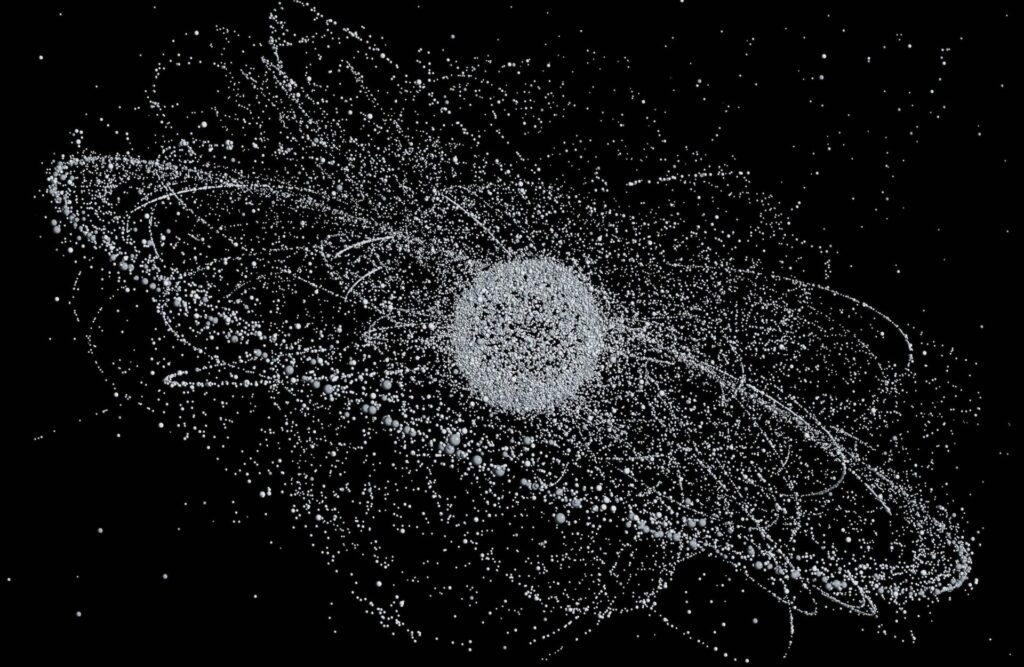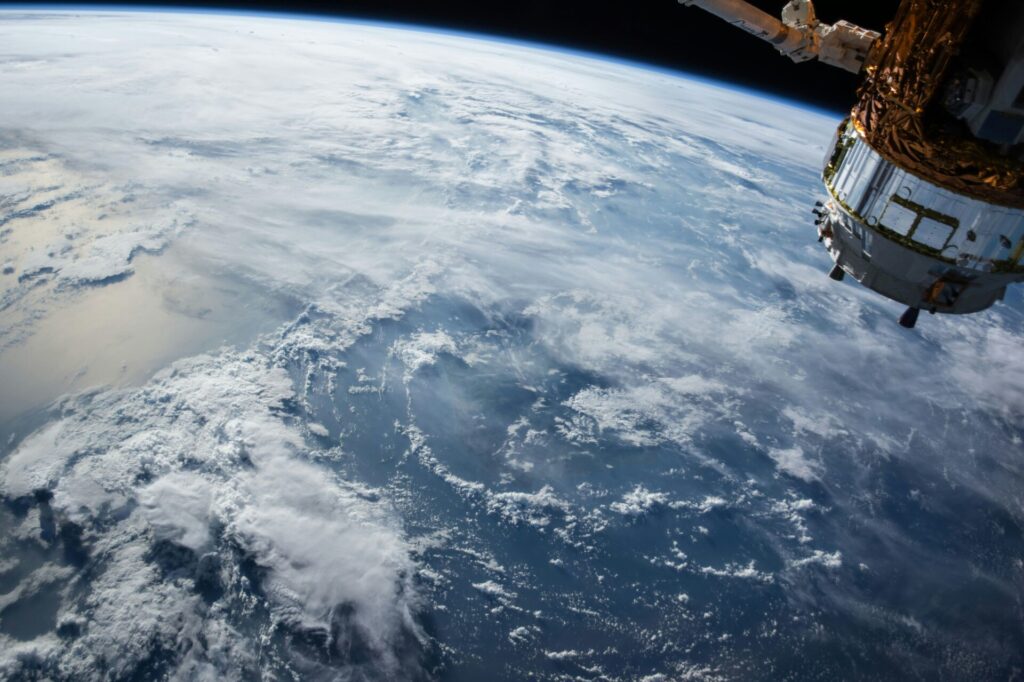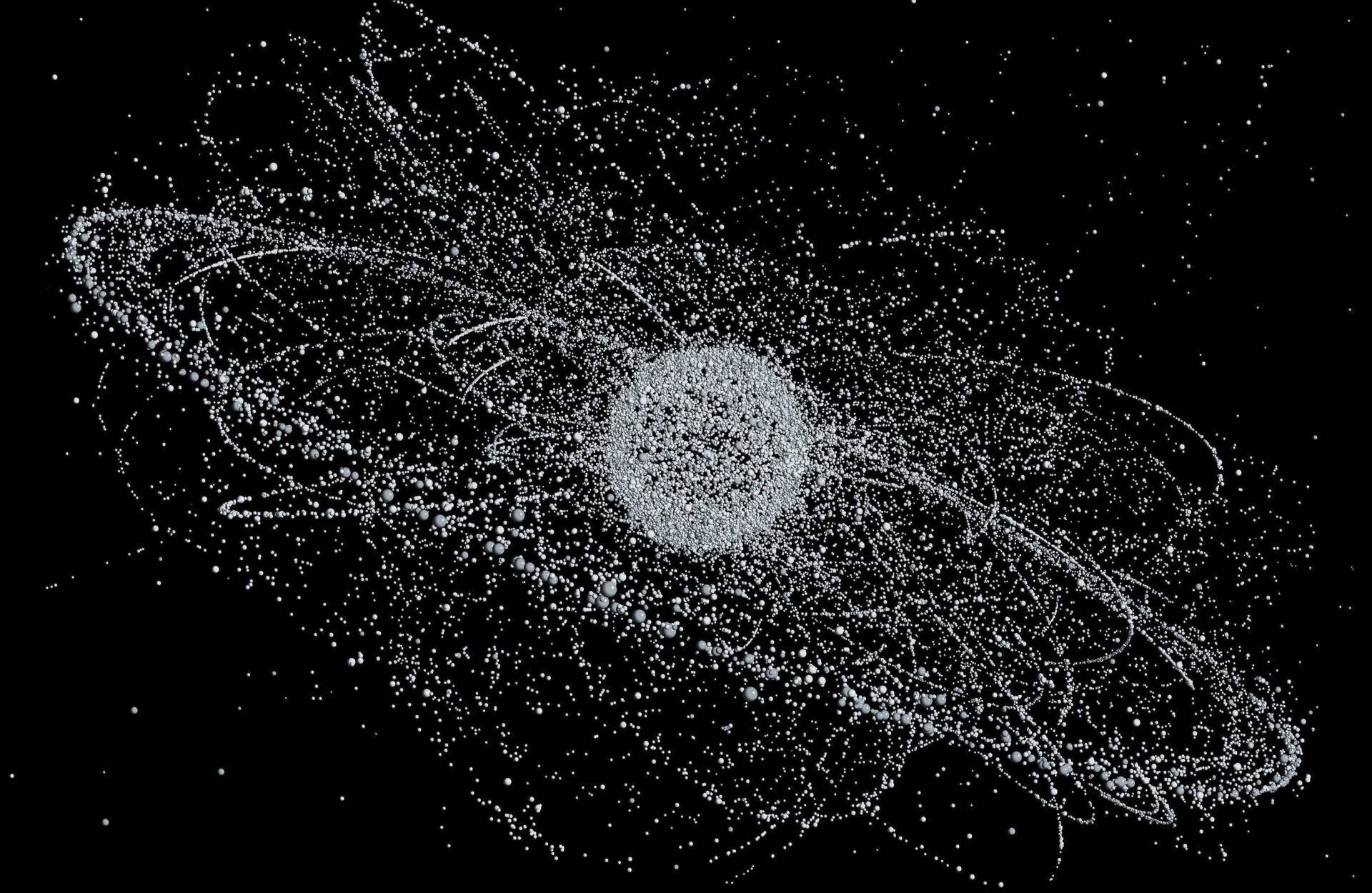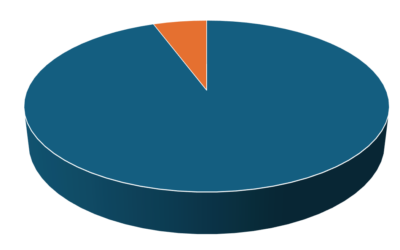Against common intuition, space isn’t empty; it’s packed with junk. But what threats does space junk pose? What is the current situation? And what can be done in response to possible threats?
All man-made objects placed into the Earth orbit that serve no function are called “space debris”. Most space debris is created when debris breaks apart, explodes or collides with inactive spacecraft and satellites. The proportion of space debris compared to the used, intact spacecraft and satellites is very large: About 95% of all objects placed into Earth orbit by humans are space debris.
The Space Surveillance Networks monitor this space debris and tracks the trajectory of each object. About 35,150 debris objects are being regularly tracked and maintained in their catalog. Models, like the ESA-MASTER model, now estimate the presence of approximately 36,500 space debris objects larger than 10 cm, 1,000,000 objects ranging from 1 – 10 cm, and 130 million debris objects from greater than 1 mm to 1 cm in Earth‘s orbit.

Collisions between these objects can create debris clouds, increasing collision risk to intact flying objects and other debris pieces. These objects are present in such a high density in certain orbits that they collide with each other, creating the threat of a chain reaction: each fragment of a collision is capable of causing further space debris, especially if it collides with a satellite or spacecraft. The effect of the cascading increase in space debris through random collisions is also known as the Kessler Syndrome. Without a change in the current situation and our previous behavior, the problem will worsen over time. Regarding this issue, the Head of the ESA‘s Space Debris Office in Darmstadt, Prof. Heiner Klinkrad, expressed:
“Among experts, there is a broad and strong consensus that immediate action for space debris removal is necessary. Our understanding of the growing space debris problem can be compared to our understanding of the need for awareness about global climate change 20 years ago.”
Prof. Heiner Klinkrad
The threat posed by space debris is becoming increasingly real: More and more evasive maneuvers must be carried out to avoid collisions and the creation of even more space debris. The space debris population is self-reinforcing through the effect of collision, where the debris pieces are crushed into smaller fragments with each subsequent collision. However, objects with a small diameter, which are more difficult to detect, should not be underestimated. The debris moves at a speed of 7 to 10 kilometers per second, depending on the altitude.
This speed means that their energy is comparable to that of a hand grenade.
To understand the urgency of space debris avoidance, it is important to know when the critical threshold of space debris is reached. When this will be exceeded is still a matter of debate. According to Kessler‘s analyses, the limit will be reached in 30 to 40 years. In contrast, NASA states that the threshold in the frequented, near-Earth orbit — between 900 and 1000 kilometers — is already reached today.
Therefore, many space agencies worldwide are researching strategies to slow the growth of space debris so that the near-Earth orbits will be usable in the future. Lisa Innocenti from the ESA‘s Clean Space Program said the following about the approach to this problem: “We need to tackle the problem in two ways. The first: We stop cluttering up space. The second: We need to remove the existing junk.” Currently, many ideas are being researched and worked on. Innocenti mentioned two methods. On the one hand, “Mitigation” and on the other, “Active Debris Removal”. Studies by ESA and NASA have shown that the currently problematic situation in near-Earth orbit — between 600 – 1000 km — could be mitigated if a few pieces of debris are removed each year using the “Active Debris Removal” method.
Examples of active disposal methods include the “ClearSpace-1” initiative from ESA, research on a high-power laser at DLR, and an EDT (Electrodynamic Tether) at JAXA. The ESA‘s “ClearSpace-1” initiative tests a cleanup satellite that will capture debris pieces and let them burn up in the Earth‘s atmosphere. Researchers at DLR are working on a high-power laser that can remove decommissioned spacecraft from orbit by irradiation, causing them to descend to Earth, and at JAXA, an electrodynamic tether is being researched that slows down debris using the Earth‘s magnetic field. Nevertheless, many of these projects and ideas are still in development, as the irregular, rapid tumbling and spinning movements of space debris significantly complicate the process of capturing.
Measures to avoid waste have also been introduced: The Inter-Agency Space Debris Coordination Committee (IADC) and the UN Committee on the Peaceful Uses of Outer Space (COPUOS) have developed guidelines to help curb the increase in space debris and the natural descent of dysfunctional spacecraft and satellites. For example, decommissioned satellites should be moved to a so-called “graveyard orbit” about 300 kilometers above the geostationary orbit. However, there is no binding international law for space debris disposal or prevention.
The issue of collision risk and the Kessler Syndrome has led to a new awareness of the impacts and the different stakeholders in space operations. Today, the entirety of spacecraft and satellites can be perceived as a complex, tightly coupled sociotechnical system. In the system of spacecraft and satellites, there is little resilience because the debris is not controllable, and some, due to their size, cannot even be detected before a collision. Yet even today, our society depends on space operations through communication satellites. Their safety and existence are directly affected by space debris.
In summary, a global awareness of shared responsibility has emerged in recent decades. The concrete urgency of waste prevention and removal is now internationally recognized. It is no exaggeration to say that this problem threatens all future space missions unless active intervention is taken soon. Therefore, the potential dangers of Kessler‘s syndrome must be taken seriously. With guidelines for curbing environmental debris and research into how satellites can be removed, there is hope that the escalation of a rampant Kessler Effect can be averted. However, internationally binding laws are still lacking, and the problem could worsen in the future due to the increasing commercialization of space travel. The measures taken so far have been too minor to ensure that the amount of space debris does not continue to rise. Timely action can still prevent the potentially catastrophic effects of the Kessler Syndrome on space operations.
Therefore, space operations in the future may require solutions for problems that are not yet imaginable today.
References
♦♦ Kabáth, Petr; Jones, David; Skarka, Marek (2020): Reviews
in Frontiers of Modern Astrophysics S.2
♦♦ Haug, Clemens (2019): ESA-Mission zur Entsorgung
Von Weltraumschrott
♦♦ https://www.esa.int/Space_Safety/Space_Debris/
Space_debris_by_the_numbers
♦♦ BR.de (2019): Weltraumschrott – Rasend schnell und
sehr gefährlich
♦♦ Lübbert, Daniel; Starte, Gregor; Tenner, Julia (2009):
Aktueller Begriff: Weltraummüll
♦♦ ESA, Space in Member States, Germany (2013): Weltraumschrott:
Internationale Experten einig über dringenden
Handlungsbedarf
♦♦ Lübbert, Daniel; Starte, Gregor; Tenner, Julia (2009):
Aktueller Begriff: Weltraummüll
♦♦ Odenwald, Michael (2019): Das Kessler-Syndrom:
Warum die Raumfahrt spätestens für unsere Enkel ein
Ende haben könnte
♦♦ ESA, Space in Member States, Germany (2017): Wichtige
Infrastruktur im All durch Weltraummüll bedroht
– ein Hintergrund
♦♦ Rundfunk, B. (2024): Weltraumschrott: Rasend
schnell und sehr gefährlich. Bayerischer Rundfunk.
https://www.ardalpha.de/wissen/weltall/raumfahrt/
weltraumschrott-satelliten-truemmer-bruchstuecke-
100.html
♦♦ ESA, Space in Member States, Germany (2017): Wichtige
Infrastruktur im All durch Weltraummüll bedroht
– ein Hintergrund
♦♦ Pelton, Joseph N. (2015): New Solutions for the Space
Debris Problem S.2
♦♦ Perrow, Charles (1989): Normale Katastrophen – Die
unvermeidbaren Risiken der Großtechnik S. 306-325
♦♦ Stirn, Alexander (2017): Kehrwoche im Orbit
♦♦ Bild im Hintergrung von NASA auf Unsplash: https://
unsplash.com/de/fotos/blick-auf-erde-und-satellityZygONrUBe8








0 Kommentare